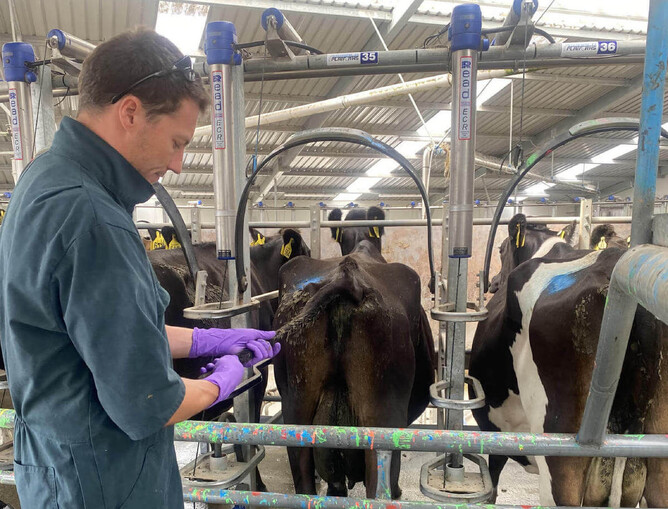Performing tail scoring allows farms to create a benchmark and identify any handling issues.
If you don’t record and benchmark how can you know if you have a problem or work to fix it?
By monitoring tail damage in your herd, it demonstrates you value animal welfare and shows you care about your animals and protects your reputation, and it is the right thing to do for your herd and the sector as a whole.
Tail damage is painful for cows and research shows an average of 20% of dairy cattle in New Zealand, approximately one million cows, have abnormal tails. Some of these have been shortened for medical reasons or it was performed before it became illegal, and some have been damaged and some have a dislocation or break.
Currently, there is limited data on the causes of damaged tails but it has been suggested that it may be caused by mechanical damage in the milking shed or collecting yard or inappropriate handling.
Tail purpose
Tails of different animals have different functions, from balancing and gripping, to attracting mates, to showing happiness and communicating other emotions.
As with other animals, a cow's tail is an important signalling device that has purpose. Tail damage is not only painful, it can also impact how a cow communicates with her world.
Mechanical damage around sheds
Backing gates and pressure from other cows could cause damage in collecting yards. Bulling cows may also damage other cows and bulls themselves may cause damage.
In milking sheds, cup removers can sometimes hook switches and cause damage, and cows pushing back against the rump bars may damage their tails. We suspect that tails may be more prone to damage around calving, when their ligaments soften and relax, but we don’t know this for sure.
Handling tails
Many of us use tails to ‘steer’ cows and push them forwards. It can also quieten down cows who are irritated. But we should think about what we would do if she didn’t have a tail? There may be other ways to handle and move cows, or quieten them.
To minimise damage, there are several other things you can try before handling tails. Check out info on DairyNZ’s website here.
Tail scoring
Tail scoring is a good start to reducing the incidence of tail damage on-farm and should be carried out at least annually. We don’t monitor because we think there is a problem, monitoring allows farms to create a benchmark and identify any handling issues. It also allows us to track whether tail damage occurs on-farm or at off-farm grazing for example.
Tail scoring involves a vet or technician visually inspecting and palpating the tail, following the Standardised Tail Scoring System. They will record any visual tail deviations, palpable traumas or swellings and any shortening, amputations or dockings in separate categories.
After a tail score if you have any concerns, your vet can help you put a plan in place to reduce any damage or injuries that may be occurring whether they are from the infrastructure or the handling techniques.
Tail scoring information can be captured within the WelFarm programme, which provides a benchmark to allow farmers to assess any new damage occurring and have assurance they have detailed records should any issues arise in the future.
Talk to your vet about tail auditing and the wider WelFarm programme.

